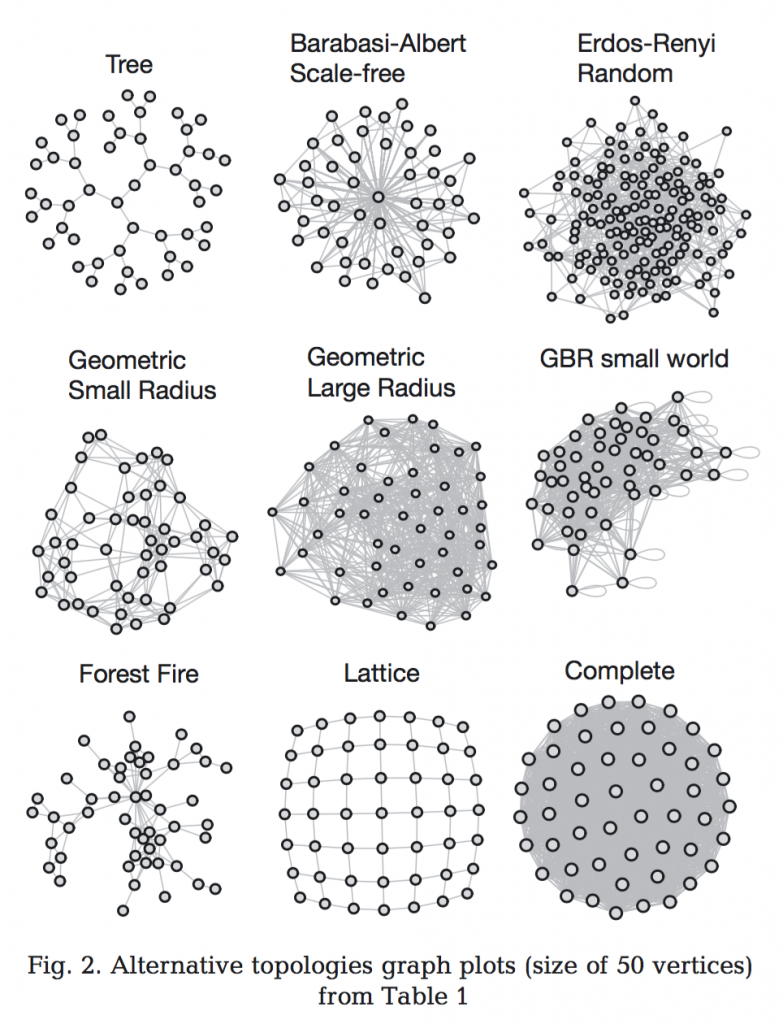Network topology and size affects the mean life time of metapopulations
The movement or dispersal of organisms between locations or patches on a herterogeneous landscape can strongly affect the ability of populations to persist over time. Traditional methods for assessing dispersal rates between patches in metapopulation studies are based primarily on distance (e.g. Euclidian distance dispersal). These approaches assume that dispersal occurs in a homogeneous and constant environment, and that organisms show random movement (in contrast to directional movement, which occurs either through movement decisions by an individual, or via abiotic drivers such as currents, wind, etc.). However, in reality, environments often exist as patchy mosaics, with variable quality among patches and differences in the likelihood that an organisms can move from one patch to another. The connections between patches and the rate at which organisms move between them can be modeled as a network, and the structure of this network (i.e. its topology and the strength of connections between patches) can influence how individuals disperse across the network. These dispersal patterns across patches are important, because they can affect the time to extinction for the metapopulation.
Kininmonth et al. implemented a network approach to assess how network topology influences the mean life time (MLT) of metapopulations (MLT = 1 / the geometric mean of the local extinction rates of populations within the metapopulation). They also investigated how the size of a metapopulation affects its mean life time (comparing the effects of the number of patches (i.e. nodes) in the network vs. the physical area that it incorporates). They used weights for edges (connections between nodes) in the network that did not explicitly incorporate area or distance to describe the emigration/immigration between populations. The authors simulated metapopulation dynamics for 9 different network configurations (Fig. 2), across a range of increasing total edge weights (the sum of the number of dispersing individuals between patches and their neighbors).
They found that increasing the total edge weight of a network caused exponential increases in the MLT of the metapopulation, but the magnitude of this effect varied across network types. The increase in MLT was more pronounced in networks with fewer highly connected clusters of nodes (i.e. networks with higher variance in connectivity). Colonization rate was a function of the weights of the network edges, so when the total edge weight increased, the network became more connected, reducing local patch extinctions and increasing MLT. The response of MLT to the number of patches in the network and the total network area both followed a similar pattern, with more evenly connected networks leading to less rapid increases in MLT.
These results have important implications for conservation and management decisions. Because network topologies that are more clustered have higher MLTs than more evenly connected networks, managers should prioritize protecting areas that contain highly connected patches. Increasing network size could also be an effective strategy, unless additions to the network are low quality, high extinction-risk patches.

Kininmonth, S., Drechsler, M., Johst, K. & Possingham, H. P. Metapopulation mean life time within complex networks. Mar Ecol-Prog Ser 417, 139–149 (2010).
